INTRODUCTION
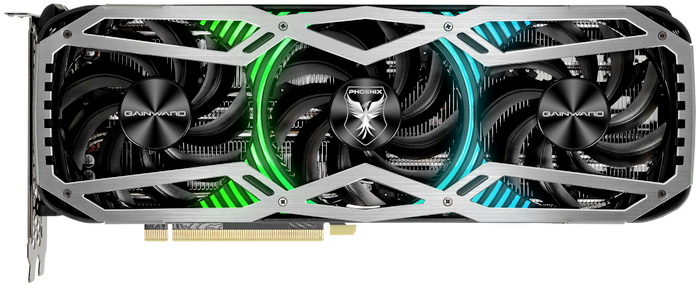
With several games for the PC like Far Cry 6, Forza Horizon 5, Call Of Duty Vanguard and of course the highly anticipated Battlefield 2042 and Halo Infinite titles coming out (or already out) by the end of 2021 it's no wonder that gamers all over the world are trying their best to get their hands on a new graphics card. Yes, this would had sounded like a bad joke to me a few years back but the combination of component shortages (primarily due to COVID-19) and the somewhat recent spike in mining has made it virtually impossible for people to get a much wanted graphics card (at least not at acceptable price levels). Surprisingly enough however where I’m located it seems that the least price inflation/jump/hike has occurred with high-end models like the GeForce RTX 3080 Ti 12GB line by NVIDIA and so today I’ll be testing one such model and more specifically the Phoenix by Gainward.
Gainward was founded in 1984 with a commitment to develop the most advanced graphics accelerators in the industry and ensuring the highest level of customer satisfaction. Received great reputation for manufacturing of leading edge products for the enthusiastic market. Gainward “Golden Sample” (GS) and “Golden Sample Goes Like Hell” (GS-GLH) are two signature synonyms for aggressive over-clocked and extreme over-clocked graphics cards in the gaming society. As one of the top graphics cards leading brands, Gainward continues to provide cutting edge products with excellent quality. Furthermore, Gainward brand name symbolizes our belief in gaining trusts and respects from our valued customers. With Headquarter based in Taipei, Taiwan, factory in Shenzhen, China and European Headquarter in Munich, Germany. Gainward is ambitious to address worldwide market and cooperates closely with its globally localized channel partners.
Typically, as with the GeForce RTX 3060 cards I’ve already tested the RTX 3080 Ti is also based on NVIDIA's 2nd generation RTX technology that sports CUDA cores with FP32+INT32 instructions (for simultaneous floating point and integer math), 2nd gen RT cores, 3rd gen Tensor cores and ray trace motion-blur effects. The GeForce RTX 3080 Ti in particular was introduced back in May of this year with 1 single goal, to provide fluent 4k gaming, even with ray tracing enabled. It's based on the same GA102 chip (8nm) as its larger brother (the RTX 3090) but packs 10240 shader units, 320 texture mapping units, 320 Tensor cores, 112 raster operators and 80 ray tracing cores. The GeForce RTX 3080 Ti has a TDP of 350W and is equipped with GDDR6X RAM (this sample came with Micron modules) based on a 384-bit memory bus with an effective clock speed of 19Gbps. Even though the Gainward Phoenix GeForce RTX 3080 Ti is not a factory overclocked model (boost clock of 1665MHz) it does features a custom cooling solution (triple two-ball bearing reinforced fans with three heatsinks, six 8mm thick heatpipes, copper base and support for zero RPM mode when in idle), die casting moulded reinforced frame and front facing ARGB LEDs. Finally, the Gainward Phoenix GeForce RTX 3080 Ti 12GB comes ready with 3 DP v1.4a ports and a single HDMI v2.1 port (these support a total of 2 displays simultaneously with resolutions of up to 8K/7680x4320p).
SPECIFICATIONS AND FEATURES

PACKAGING AND CONTENTS
A drawing of a Phoenix placed right under the company name and over the model’s name takes up most of the front of the box.
The same drawing is placed at the rear, this time however over a few words about NVIDIA's Ampere architecture and of course the product specifications.
As usual the card is wrapped inside a static-free bag and placed between two pieces of black foam.
Along with the card inside the box you'll also find a plastic weight support bracket with a smaller plastic piece and screws, the power adapter and the user manual.
THE GAINWARD PHOENIX GEFORCE RTX 3080 TI 12GB
The Phoenix GeForce RTX 3080 Ti 12GB by Gainward is a rather large 2.7 slot card that measures 294mm in length and 112mm in height.
Still, this is one of the smallest GeForce RTX 3080 Ti 12GB cards around and actually even smaller than the ASUS ROG Strix Gaming OC GeForce RTX 3060 12G which i reviewed a while back (review here).
For this specific model Gainward has used three two-ball bearing reinforced fans, all of which spin counter clockwise.
These three fans push air down to three heatsinks all of which are connected via eight 8mm heatpipes.
At the top of the card, we find the GeForce RTX name, unfortunately no ARGB LEDs are placed here.
This particular card requires two 8-pin PCIe power connectors (something which is somewhat obvious by its TDP).
The rear metal backplate Gainward has used is probably one of the best i've seen to date, not only in terms of looks but also thickness.
Moving at the front of the card we find 3 Display Port 1.4a ports and a single HDMI 2.1 port.
Much like many other graphics cards out there the Gainward Phoenix GeForce RTX 3080 Ti is best placed horizontally in a case if you want to showcase its ARGB lighting.
EXPERTTOOL V11.6
If you'd like to overclock your card or if you'd just like control over its ARGB lighting you should download the ExpertTool software from Gainward's support page.
The over clocker tab is self-explanatory so from here you can increase/decrease clocks either on their own or by adjusting voltages.
From the fan control page, you can adjust the fan curve to reduce (or even increase) temperatures.
There are 6 different ARGB effects you can use with this model all of which are accessible via the LED control tab.
Inside the status screen you can monitor the clocks, temperatures and fan speed.
You can also increase the size of the window and change from Celsius to Fahrenheit from the setting page.
If you click on the information located on the lower end of the window you will access basic info on the card.
Worth mentioning is that the OC scanner is actually a valid way to overclock your card (between the clocks i got here and the ones i was able to hit manually there was a very small difference).
TEST BED
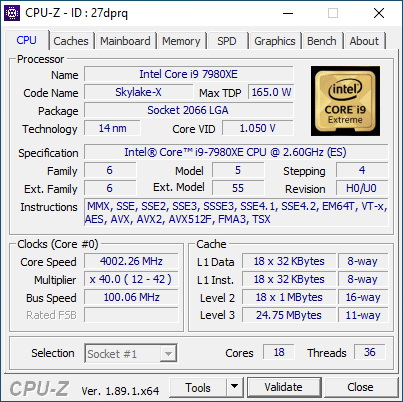

TESTING METHODOLOGY
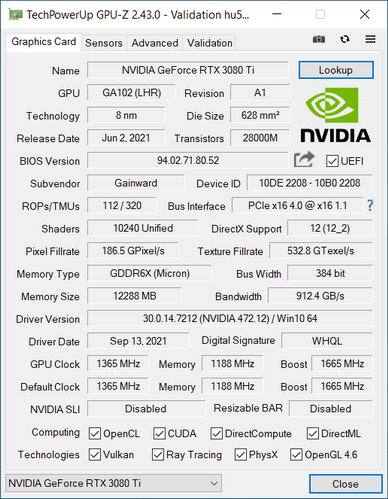
Since we'll be using our latest test rig with our graphics cards tests, we also moved to another screen (Philips BDM4037UW) in order to also offer 4k Ultra HD tests. Of course, 2160p (3840x2160p) is not the only resolution we'll be testing cards with, we are also going to be testing them at 1080p Full HD (1920x1080p) and 1440p (2560x1440p). Also, because far too many gamers own Ultra-Wide screens at first i wanted to use our AOC AGON AG352UCG monitor in order to also have its resolution of 3440x1440p in our charts but since it's plugged into our other test rig several meters away from this one i really had to choose (and 4k seemed like the better choice). This time over we also updated the list of benchmarks/games to include the Time Spy benchmark by UL, Assassin's Creed Odyssey by Ubisoft, Devil May Cry 5 by Capcom, Dreadnought by Yager, GEARS 5 by The Coalition, Metro Exodus by 4A Games, Star Citizen by Cloud Imperium Games, The Outer Worlds by Obsidian Entertainment, Cyberpunk 2077 by CD Project* and DCS World by Eagle Dynamics**.
As with the past options like power saving, sharpness and overlays are all disabled in the cards we’re testing (to achieve maximum performance) and all tests are repeated a total of 3 times in a fresh Windows 10 Pro installation with all updates installed until the day of our review (same as all the games used). Room temperature is as usual controlled and steady at 23 degrees Celsius for all tests and to record the temperatures of the cards we used AIDA64 and GPU-Z. Recording noise levels is done with an ExTech HD600 dBA meter from a distance of no more than half a meter away (exterior of case) while power consumption is measured again using GPU-Z.
* Since February 2021
** Since August 2021
TEST RESULTS - 3DMARK TIMESPY
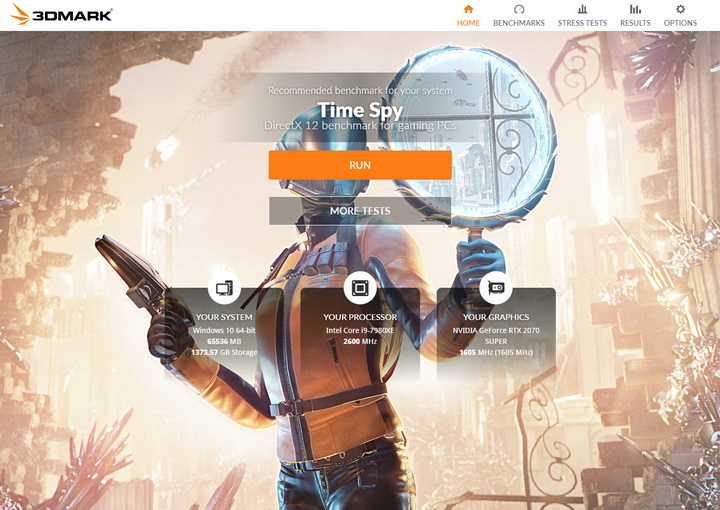
Time Spy was added in 3DMark back in 2016 with only 1 simple goal, to test the graphics of systems with Windows 10 and DirectX 12. Time Spy was used at default settings.
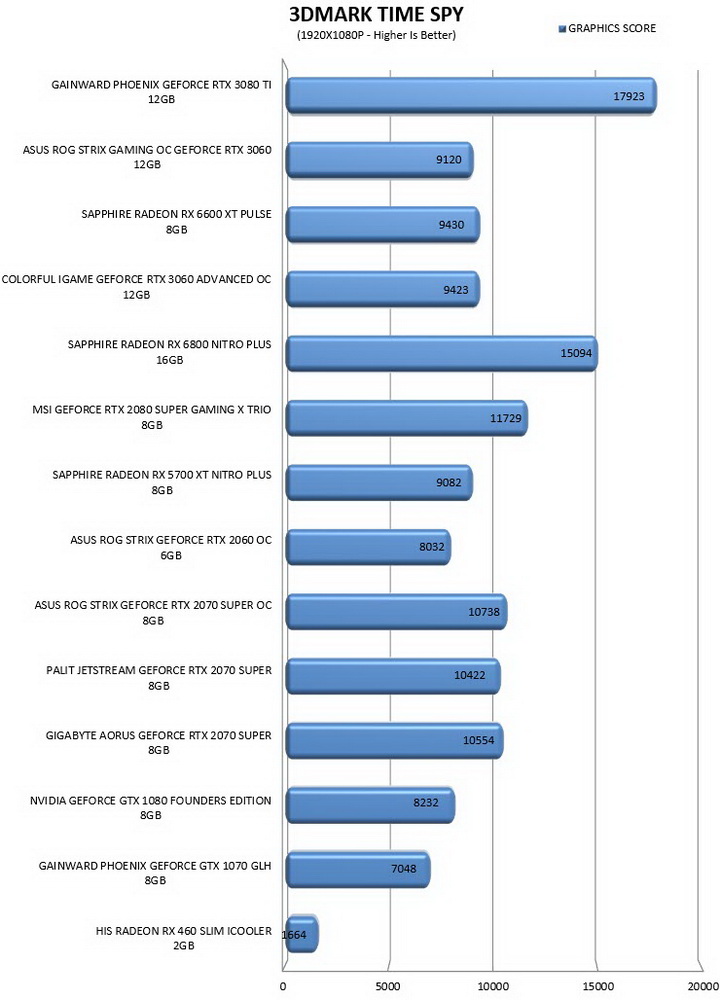


TEST RESULTS - ASSASSINS CREED ODYSSEY

Assassin's Creed Odyssey is an action role-playing video game set in the year 431 BC and the Peloponnesian War between Athens and Sparta and is based on the AnvilNext engine. For our tests we use the built-in benchmark of the game with FPS limit off, V-Sync off and the graphics set at high quality (because Assassins Creed Odyssey auto-detects your graphics card and sets settings accordingly the same graphics quality needs to be set manually every time).


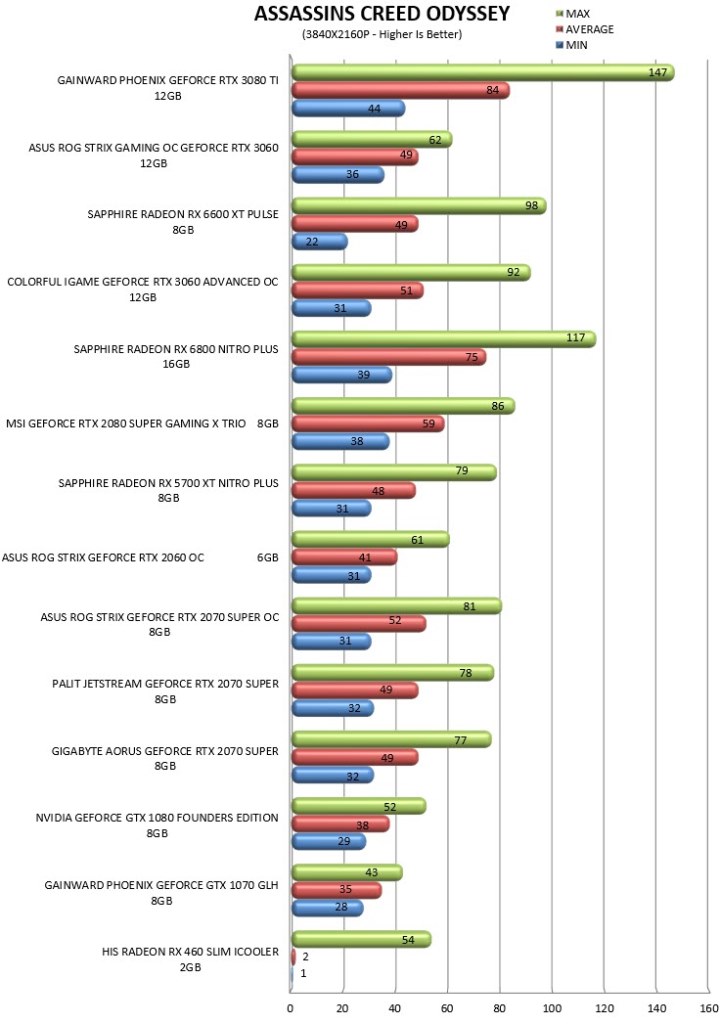
TEST RESULTS - BORDERLANDS 3

Borderlands 3 is an action role-playing first-person shooter video game released back in late 2019 and is powered by Unreal Engine 4. Borderlands 3 has a very basic built-in benchmark which we set at DirectX 12 with unlimited frame rate and overall quality set to High.



TEST RESULTS - DEVIL MAY CRY 5

Devil May Cry 5 is an action-adventure hack and slash video game released in March 2019 and is based on the RE Engine like other titles by Capcom. Devil May Cry 5 doesn't feature his very own built-in benchmark so for that purpose we're using the latest version of Rivatuner Statistics Server with V-Sync Off, variable frame rate and all graphics settings set at High.
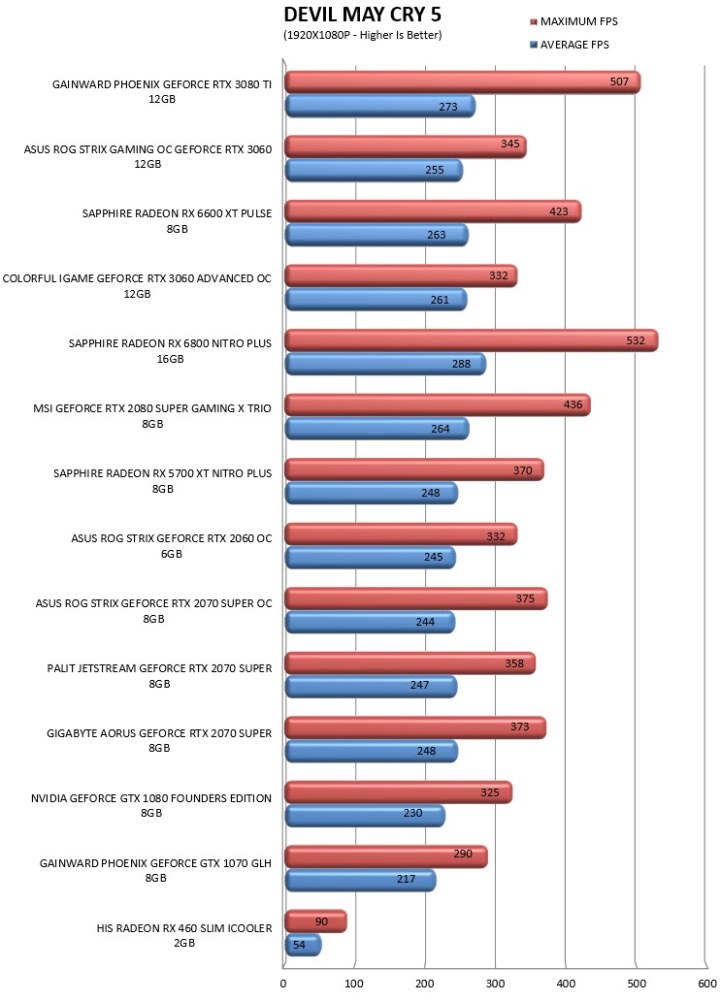
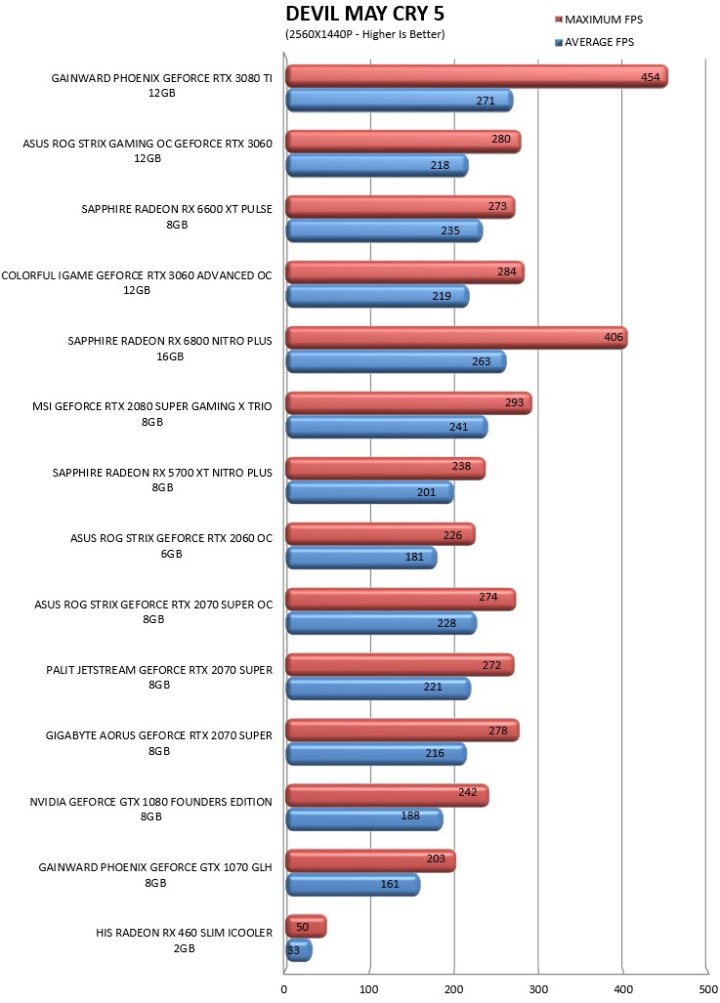

TEST RESULTS - DREADNOUGHT

Dreadnought is a space combat simulation game released for the PC in late 2018 and is the 3rd game in our tests based on the Unreal Engine 4. Dreadnought used to come with its own built-in benchmark but since that was removed, we decided to use Rivatuner Statistics Server with V-Sync off and graphics set to High (this game is capped after all so I removed that and did all tests again – unfortunately I no longer have all the cards here).
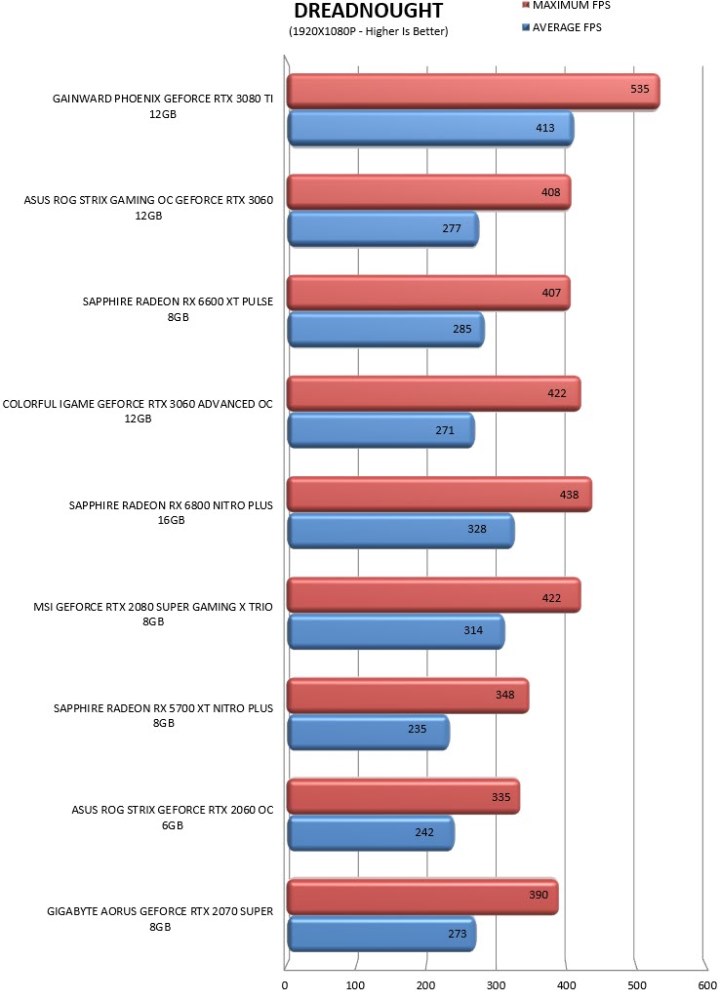
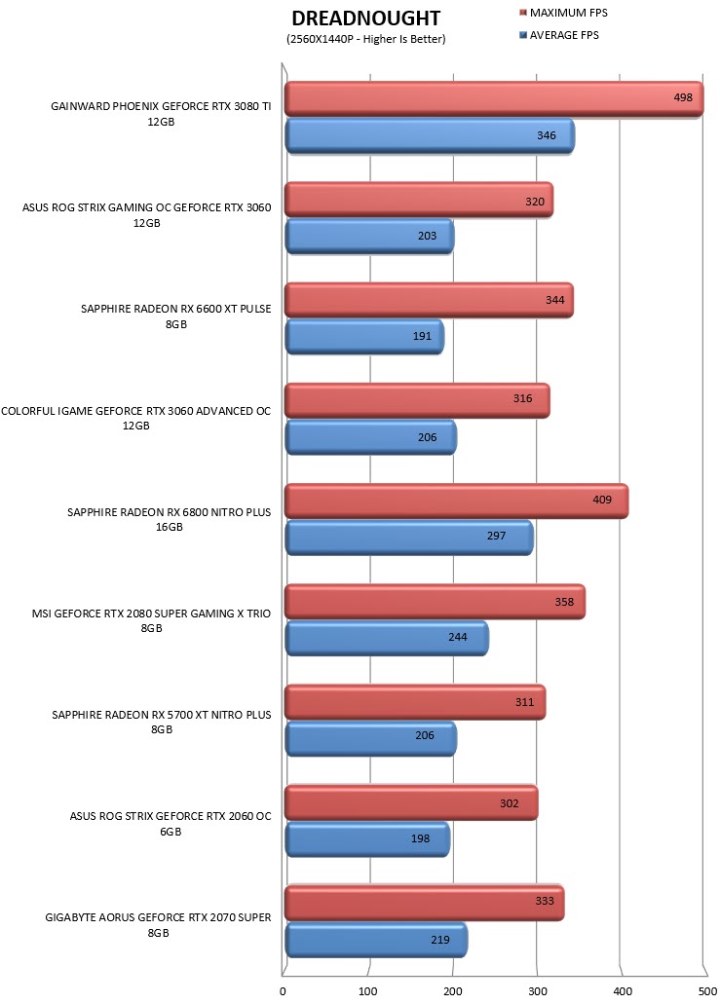

TEST RESULTS - GEARS 5

Gears 5 is a third-person shooter video game released back in mid-2019 and is powered by Unreal Engine 4 just like Borderlands 3. Gears 5 features a very convenient (not to mention fast) built-in benchmark which we use with V-Sync off, unlimited frame rate (none for minimum) and Ultra graphics quality.



TEST RESULTS - METRO EXODUS

Metro Exodus is a first-person shooter video game released in 2019 and is based on the 4A Engine. The latest game in the Metro series also features its very own benchmark utility which we set at DirectX 12 and Ultra graphics quality (we're also running RTX tests with that setting set at Ultra).



TEST RESULTS - STAR CITIZEN

Star Citizen is an upcoming multiplayer space trading and combat game the main development of which started back in 2012 and is currently based on the Lumberyard game engine. Not only does Star Citizen come without any built-in benchmark (or utility) but it’s still in Alpha status meaning that this is not the most stable game title to use for our benchmarks (numerous graphics optimisations are expected between now and launch day). Still, we wanted to have it in our charts for anyone interested and so we did by using Rivatuner Statistics Server with V-Sync turned off and the graphics set at High.


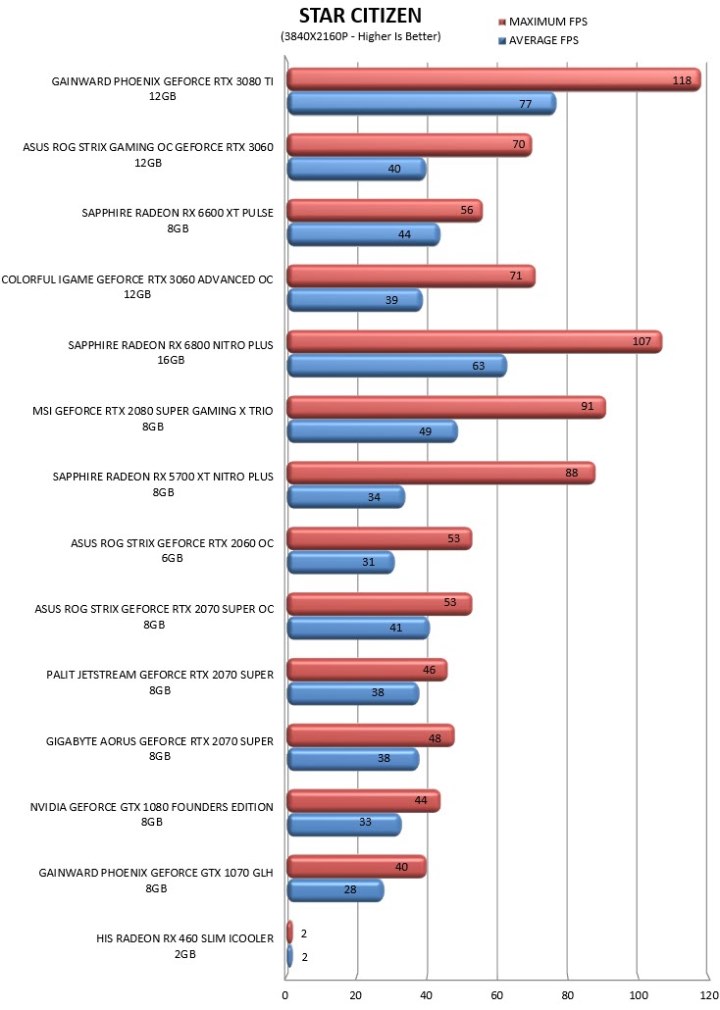
TEST RESULTS - THE OUTER WORLDS

The Outer Worlds is an action role-playing game released back in late 2019 and is also based on the Unreal Engine 4. The Outer Worlds is yet another title we had to use Rivatuner Statistics Server with V-Sync off, unlimited frame rate and graphics set at Very High.
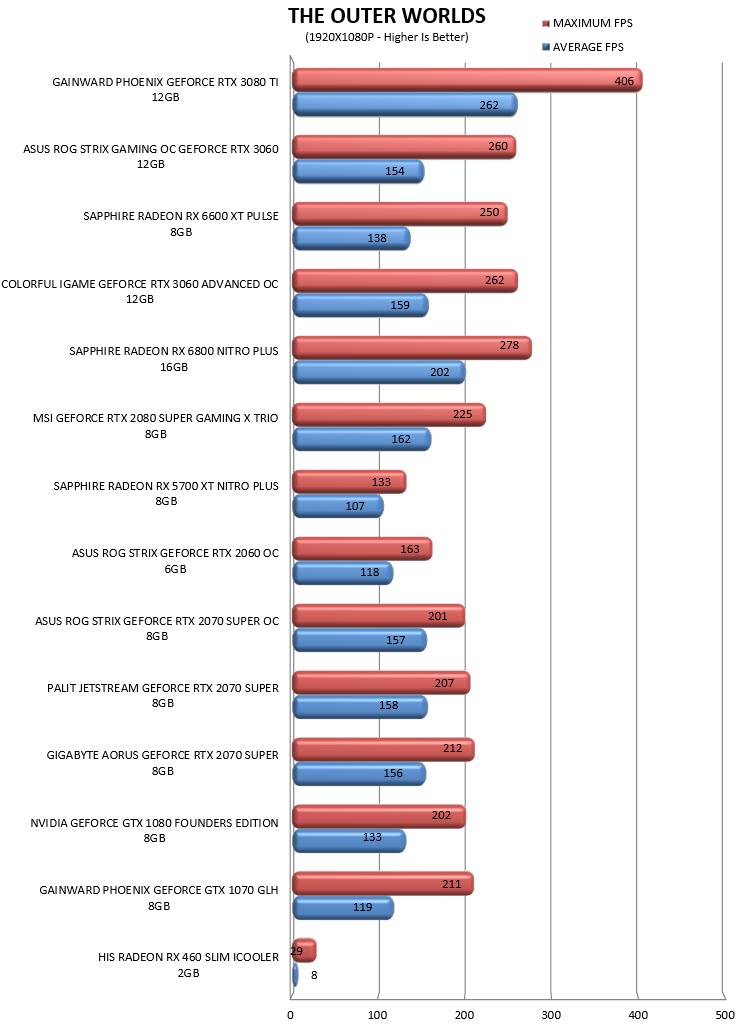


TEST RESULTS – CYBERPUNK 2077

Cyberpunk 2077 is the latest game by CD Project and is based on their REDEngine 4. Benchmarks were run on game version 1.12 with all settings set at High and with the help of Rivatuner Statistics Server.



TEST RESULTS – DCS WORLD

DCS World by Eagle Dynamics is currently the leading combat flight simulator for the PC running on their very own in-house EDGE graphics engine. Benchmarks are run with graphics set on high with V-Sync off and once again with the help of Rivatuner Statistics Server.



TEST RESULTS - OVERCLOCKING

I was able to push boost clocks from 1665MHz to 1795MHz and RAM clocks to 1344MHz from 1188MHz without touching the voltage. This is not a huge overclock but it did offer a relatively good boost in frames as you can see from the charts bellow.






TEST RESULTS - POWER CONSUMPTION / TEMPERATURES / NOISE LEVELS



CONCLUSION
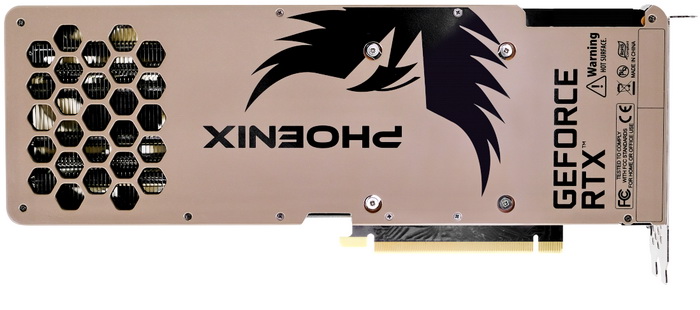
It’s been roughly 5 years since I had anything by Gainward in the office/lab so the Phoenix GeForce RTX 3080 Ti 12GB (or GeForce RTX 3080 Ti Phoenix) was a very pleasant surprise. You see it’s not only one of the most powerful/fastest graphics cards out there but it’s also among the smallest RTX 3080 Ti models (294mm vs 320mm for most) something which I expect to appeal to many potential buyers. Now for reasons I haven’t had the chance to check even though the Phoenix GeForce RTX 3080 Ti (and probably all RTX 3080 Ti models – got another review coming up soon so I’ll be able to check that) does an extremely good job in 4k (2160p) it falls a bit short on Full HD (1080p) and so if you plan on gaming on that resolution, you really have very little reason to look this way (very high refresh rate monitor owners excluded). Performance aside noise levels are also set at good levels, build quality is very good and as for looks, well, if you don’t have another card installed right next to it, yes it looks great. Temperatures however were a tad high and even though you can fix that by adjusting fan curves this also means increased noise levels.
Even though the GeForce RTX 3080 Ti 12GB graphics cards didn’t see their prices more than doubled in recent months like their lower-end brothers they did get more expensive and so the Phoenix GeForce RTX 3080 Ti 12GB by Gainward currently retails for no less than 1949Euros inside the EU (Amazon.de – seems to be out of stock currently). Even at around 1200Euros (launch price) the Phoenix GeForce RTX 3080 Ti 12GB by Gainward was still not what I’d call affordable so at around 1900Euros things are even worse than that. Price aside however we’re still talking about one of the top 3 most powerful cards in the market today and since it also delivers in build quality, features, available outputs and even looks the Gainward Phoenix GeForce RTX 3080 Ti 12GB certainly deserves no less than the Golden Award.

PROS
- Top Of The Charts Performance (4K)
- Build Quality (Backplate / Reinforced Metal Frame)
- Good Overclocking Headroom
- Noise Levels / Power Consumption
- ARGB LEDs
- Support Bracket Included
- Size (294mm Long)
- Supported Technologies (2nd Generation Real Time Ray Tracing & Deep Learning Super Sampling)
CONS
- Size (3 Slot Card)
- Price (For Some)

 O-Sense
O-Sense


















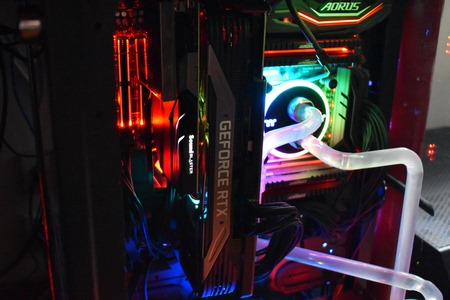
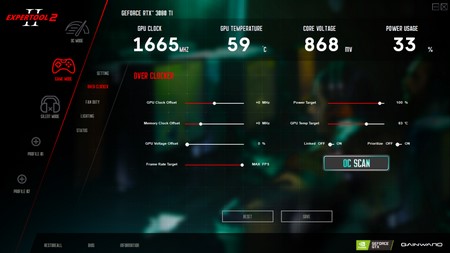








.png)

